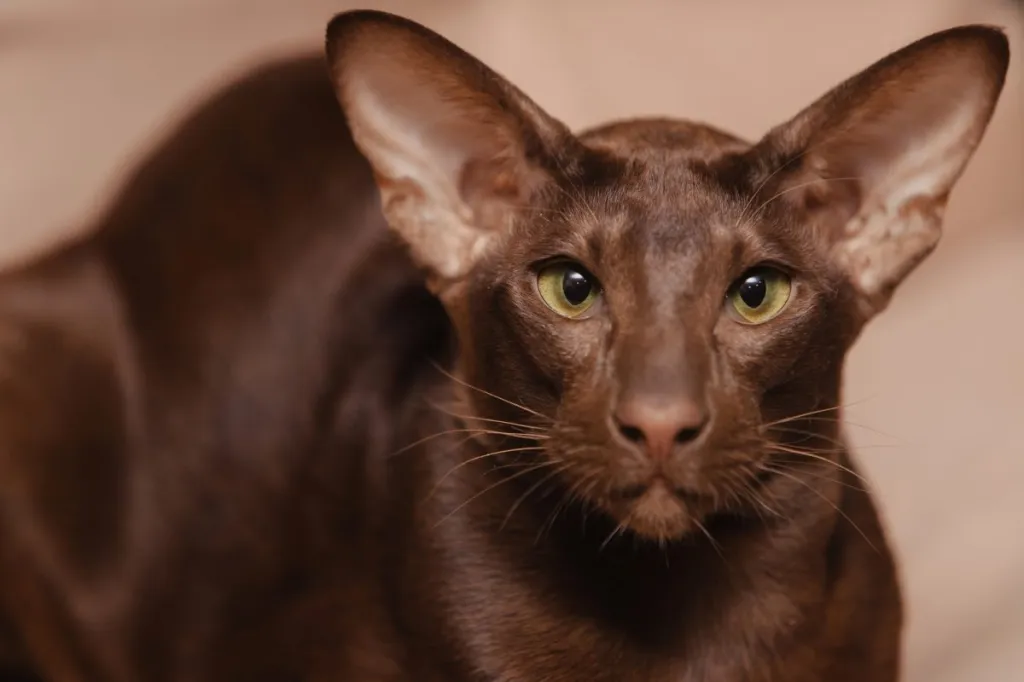The Havana Brown cat is a distinct and charming breed known for its rich, chocolate-brown coats and captivating green eyes. The Havana’s special head shape distinguishes it, as it is longer than it is wide.
The Havana Brown cat breed has an interesting history, with its roots dating back to the early 1950s in England. Siamese Cats and Domestic Black Cats were likely crossed to create Havana Brown cats. In summary, these cats have a rare appearance, loving personality, and unique history. If you’re looking for a unique and loving feline friend with a coat that looks like a piece of fine chocolate, the Havana Brown might be the perfect choice for you.
When considering a Havana Brown, it’s advisable to prioritize adopting from rescue organizations or shelters to provide a loving home to a cat in need. However, if you decide to purchase, it’s crucial to choose a reputable breeder. Conduct thorough research to ensure that the breeder follows ethical practices and prioritizes the well-being of their cats. Reputable Havana Brown breeders prioritize the health and temperament of their cats, conduct necessary health screenings, and provide a nurturing environment for the kitties. This active approach ensures that you bring home a healthy and happy kitty while discouraging unethical breeding practices.
Quick Facts
- Origin: England
- Size: Havana Browns are of medium size, with males typically weighing 8-10 pounds and females around 6-8 pounds.
- Lifespan: They have an average lifespan of 10-15 years, with proper care.
- Coat: The Havana Brown has a short, sleek coat that is uniformly rich brown, resembling the color of Cuban cigars.
- Temperament: Affectionate, friendly, and sociable
- Exercise Needs: Havana Browns are moderately active and enjoy interactive playtime to keep them mentally and physically stimulated.
- Training: They are intelligent and can be trained using positive reinforcement techniques.
- Grooming: Their short coat is low-maintenance and requires only occasional brushing to keep it in good condition.
- Health: This breed is generally healthy, but it can be prone to certain genetic health issues like heart disease and respiratory problems, so regular veterinary check-ups are essential.
- Fun facts: Havana Brown cats are known to be very vocal, and they often use their voices to communicate with their owners.
- This cat is the only cat to have brown whiskers.
- Their name references the similarity of their coat to a cigar from Havana, rather than their origin.
Havana Brown Pictures
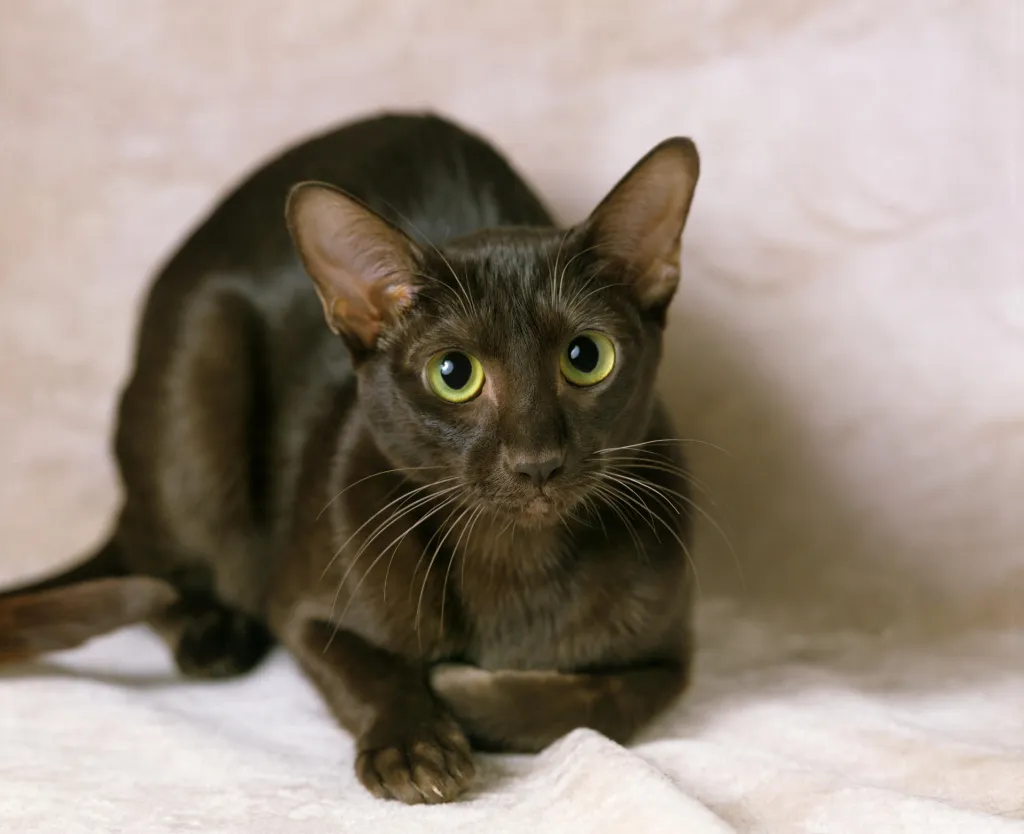
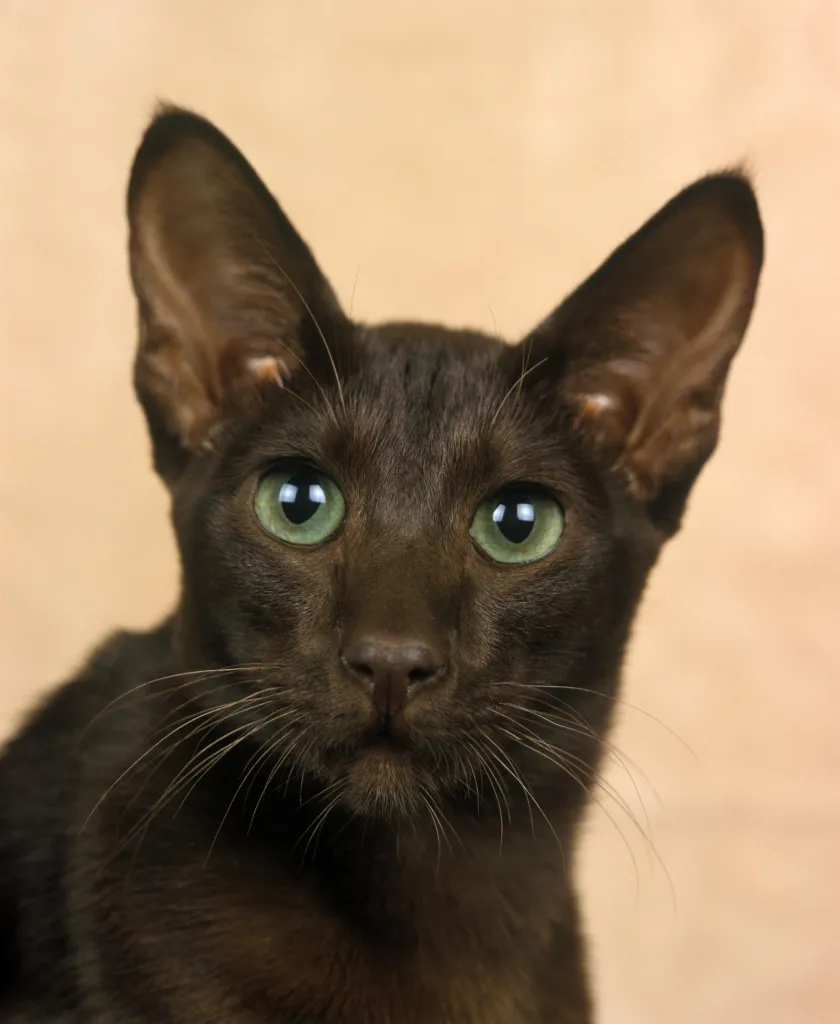
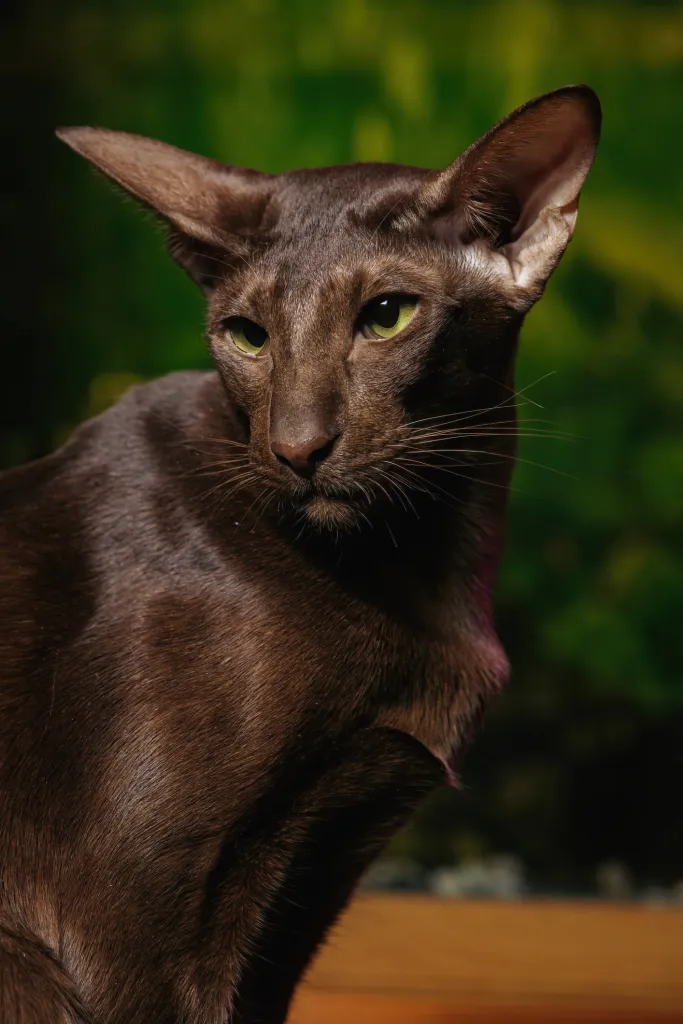
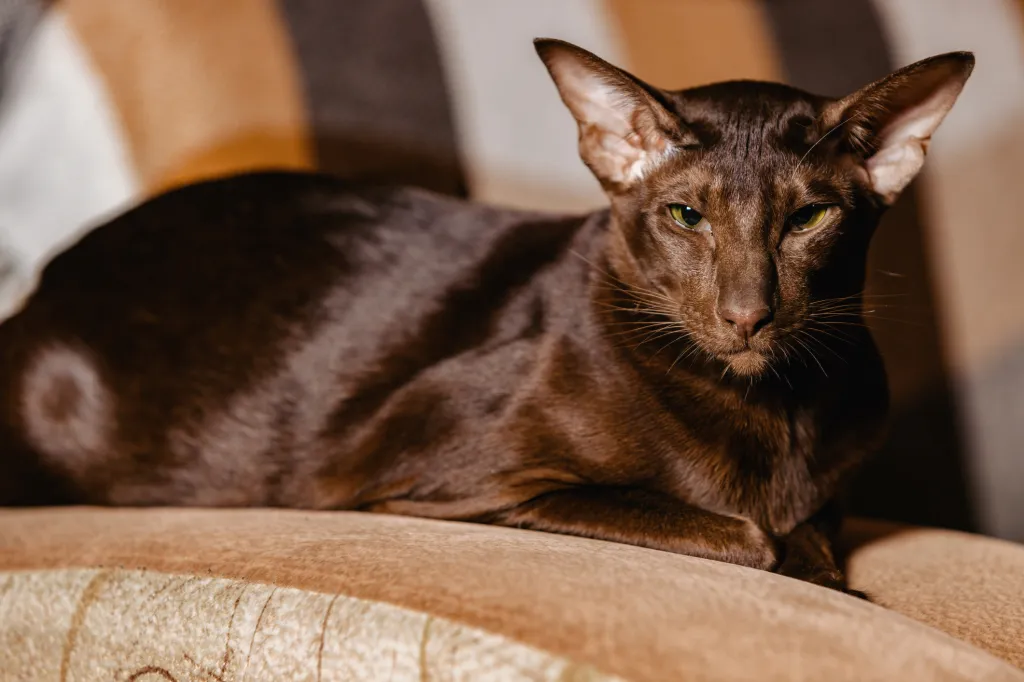
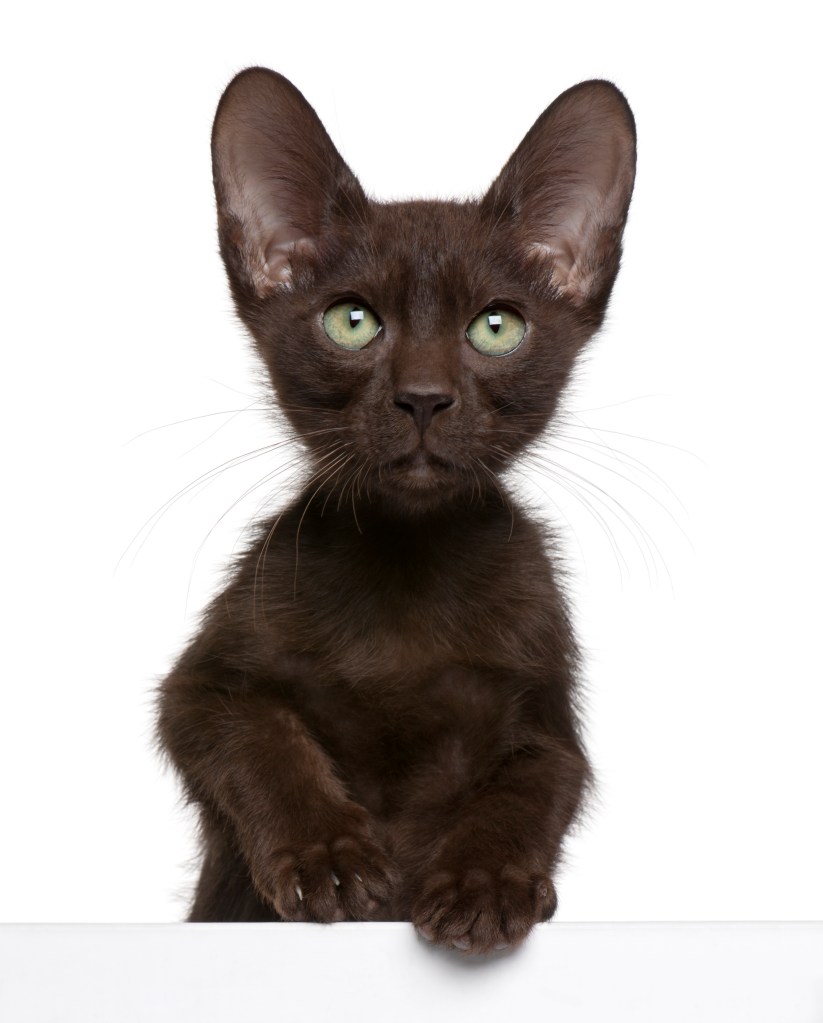
-
Affectionate with Family
Some cat breeds are typically independent and aloof, even if they’ve been raised by the same person since kittenhood; others bond closely to one person and are indifferent to everyone else; and some shower the whole family with affection. Breed isn’t the only factor that goes into affection levels; cats who were raised inside a home with people around feel more comfortable with humans and bond more easily.

See Cats Less Affectionate with Family -
Amount of Shedding
If you’re going to share your home with a cat, you’ll need to deal with some level of cat hair on your clothes and in your house. However, shedding does vary among the breeds. If you’re a neatnik, you’ll need to either pick a low-shedding breed or relax your standards. This furniture cover can make it easier to clean up cat hair and keep it off your sofa!
-
General Health
Due to poor breeding practices, some breeds are prone to certain genetic health problems. This doesn’t mean that every cat of that breed will develop those diseases; it just means that they’re at an increased risk. If you’re looking only for purebred cats or kittens, it’s a good idea to find out which genetic illnesses are common to the breed you’re interested in.
-
Potential for Playfulness
Some cats are perpetual kittens—full of energy and mischief—while others are more serious and sedate. Although a playful kitten sounds endearing, consider how many games of chase the mouse-toy you want to play each day, and whether you have kids or other animals who can stand in as playmates. A classic wand cat toy like this one is perfect for playful felines!
-
Kid-Friendly
Being tolerant of children, sturdy enough to handle the heavy-handed pets and hugs they can dish out, and having a nonchalant attitude toward running, screaming youngsters are all traits that make a kid-friendly cat. Our ratings are generalizations, and they’re not a guarantee of how any breed or individual cat will behave; cats from any breed can be good with children based on their past experiences and personality.
-
Friendly Toward Strangers
Stranger-friendly cats will greet guests with a curious glance or a playful approach; others are shy or indifferent, perhaps even hiding under furniture or skedaddling to another room. However, no matter what the breed, a cat who was exposed to lots of different types, ages, sizes, and shapes of people as a kitten will respond better to strangers as an adult.
-
Easy to Groom
Some breeds require very little in the way of grooming; others require regular brushing to stay clean and healthy. Consider whether you have the time and patience for a cat who needs daily brushing. You should definitely pick up this awesome de-shedding tool for cats of any hair length!
-
Pet Friendly
Friendliness toward other household animals and friendliness toward humans are two completely different things. Some cats are more likely than others to be accepting of other pets in the home.
Havana Brown History
How did a brown cat of Southeast Asian origin, believed to offer protection from evil, come to be known as a Swiss Mountain Cat, and how did it then adopt the name Havana Brown? The full answers to those questions are lost to history, but what appears to have happened is that solid-brown cats of Siamese type from Thailand were exhibited in Britain in the 1890s. Somehow during that time they acquired the moniker Swiss Mountain Cat.
In 1920, the Siamese Cat Club of Britain decided that brown cats without blue eyes were no longer desirable, and that was that. Breeders lost interest in them until the 1950s, when a group of British cat breeders set themselves the task of determining the genetic makeup of a self-brown (solid-colored) cat. They eventually produced a male chestnut-brown kitten, the result of a cross between a short-haired black cat and a chocolate-point Siamese. Russian Blues and Burmese may also have played a role in the development of what came to be known as the Havana Brown (whose only connection to Cuba is the supposed resemblance of his color to that of a fine Havana cigar).
But as it turned out, according to an article in the 1982 CFA Yearbook, the most successful and most often used breeding to produce a self-brown cat was between a black shorthair and a seal-point Siamese carrying the chocolate gene. The cats, which also went by the name Chestnut Foreign Shorthair—as many aliases as they had, they might well have been Cold War Cuban spies—were first exported to the United States in the 1950s.
It was then that the breed began to go two different ways. In Britain he is now considered to be a brown Oriental Shorthair. In the U.S., he is known as the Havana Brown and has a body and head type that distinguishes him from his British cousin. The Cat Fanciers Association recognized the breed in 1964.
The Havana Brown is a rare breed, so much so that his genetic diversity is threatened. It has been propped up by an outcrossing program begun in 1998, which permits the cats to be bred to unregistered black or blue domestic shorthairs or certain colors of Oriental Shorthairs or chocolate-point or seal-point Siamese. The kittens produced by those breedings can then be bred to Havana Browns. If those kittens have the Havana Brown coloring, they can be registered as Havana Browns.
Havana Brown Size
The Havana is a medium-size cat weighing 6 to 10 pounds.
Havana Brown Personality
The rich tobacco-colored cat known as the Havana Brown may or may not be named for the addictive leaf, but the cats themselves are addictive to the people who come to know them. They are outgoing and friendly. Expect one to follow you around the house as you go about your day.
Like most cats with Siamese ancestry, the Havana can be demanding and talkative, but his voice is softer and his personality more subtle. He is smart and likes the challenge of teaser and puzzle toys. When he is through playing, the affectionate Havana will happily ensconce himself on your lap.
Havana Brown Health
Havana Brown cats are generally a healthy breed, but like all cats, they can be prone to certain health issues. Responsible breeding practices can help reduce the likelihood of genetic health problems. Here are some health issues that Havana Brown cats may be predisposed to:
-
Hypertrophic Cardiomyopathy (HCM): HCM is a common heart condition in cats, including Havana Browns. It involves the thickening of the heart muscles, which can affect the heart’s ability to function properly. Regular veterinary check-ups and echocardiograms can help detect and manage HCM.
-
Respiratory Infections: Havana Brown cats, like other breeds, can be susceptible to upper respiratory infections, such as feline herpesvirus (FHV) and feline calicivirus (FCV). These infections can cause symptoms like sneezing, coughing, and eye discharge.
-
Obesity: Obesity can be a concern for Havana Browns, as they enjoy eating and may become overweight if their diet is not controlled. Maintaining a healthy weight through proper portion control and exercise is essential.
-
Joint Problems: As they age, cats, including Havana Browns, can develop joint issues like arthritis. Providing a comfortable environment and monitoring their mobility as they get older is important.
Havana Brown Care
The Havana Brown’s short, smooth coat is easy to care for with a quick weekly combing. Polishing it with a chamois will make it shine. A bath is rarely necessary.
Brush the teeth to prevent periodontal disease. Daily dental hygiene is best, but weekly brushing is better than nothing. Trim the nails every couple of weeks. Wipe the corners of the eyes with a soft, damp cloth to remove any discharge. Use a separate area of the cloth for each eye so you don’t run the risk of spreading any infection. Check the ears weekly. If they look dirty, wipe them out with a cotton ball or soft damp cloth moistened with a 50-50 mixture of cider vinegar and warm water. Avoid using cotton swabs, which can damage the interior of the ear.
Keep the litter box spotlessly clean. Cats are very particular about bathroom hygiene. It’s a good idea to keep a Havana Brown as an indoor-only cat to protect him from diseases spread by other cats, attacks by dogs or coyotes, and the other dangers that face cats who go outdoors, such as being hit by a car. Havana Browns who go outdoors also run the risk of being stolen by someone who would like to have such a beautiful cat without paying for it.
Havana Brown Coat Color And Grooming
The Havana Brown’s distinctive color extends even to his whiskers. He is the only cat with a breed standard that spells out whisker color: brown, of course, complementing the coat color. Looking out from all that minky-brown richness are vivid green eyes with an oval shape.
The Havana is also distinguished by his uncommon head shape; it’s longer than it is wide. Large ears tilt forward. He has a firm, muscular body covered in short, smooth fur in a rich, warm reddish-brown. Kittens and young adults may have the barest hint of tabby markings, which disappear as they mature. The nose leather is brown with a rosy flush, and the paw pads are a rosy brown as well.
Children And Other Pets
The Havana Brown is playful and smart and can be a good friend to a child who treats him nicely. He’s one of those cats who enjoys playing fetch and learning tricks, and his energy level means he won’t wear out before the child does. He is happy to live with other cats and cat-friendly dogs, too, thanks to his amiable disposition. Introduce pets slowly and in controlled circumstances to ensure that they learn to get along together.
Havana Brown Rescue Groups
More Info For You
If you’re also looking for a dog, please visit DogTime’s dog breed page!
